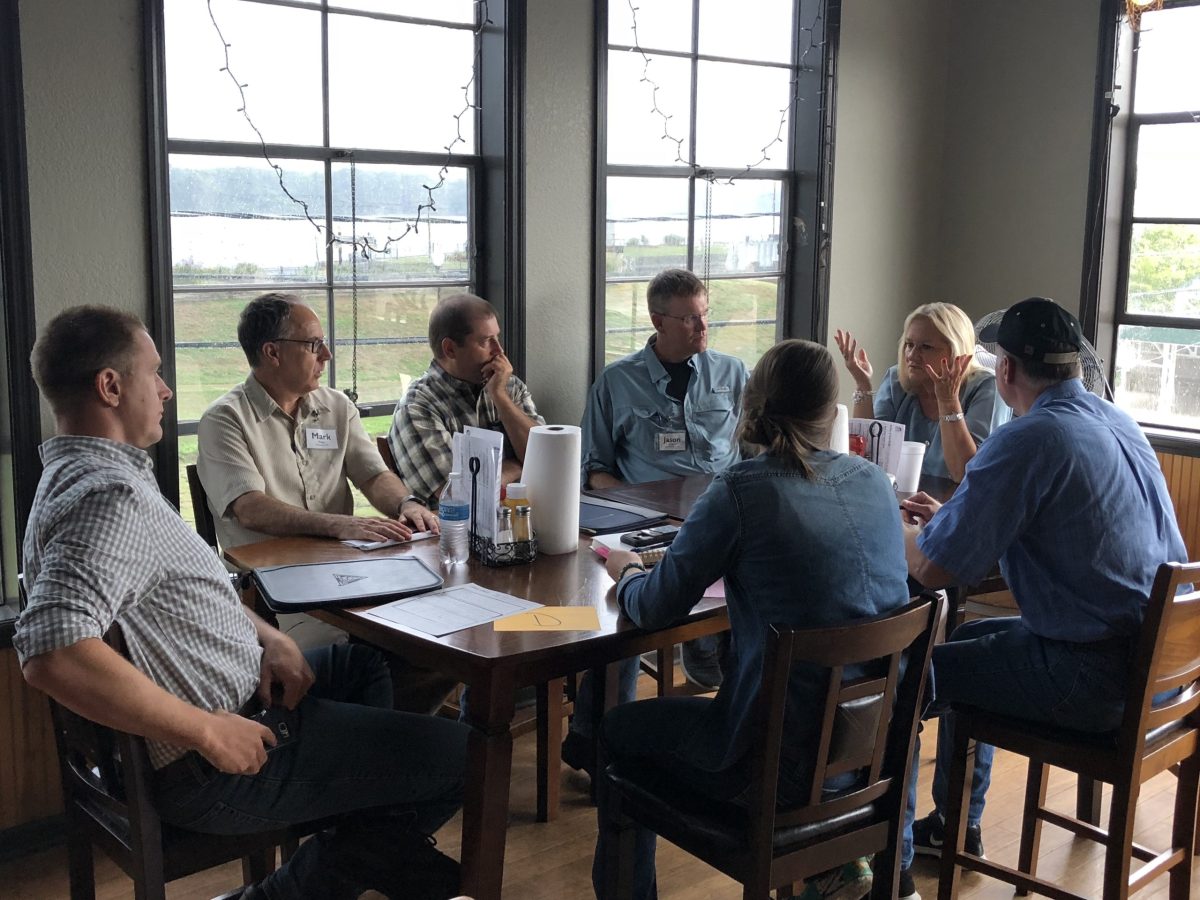By Tracy Chaplin, Co-Nexio Founder and Principal
I was facilitating a three-day engagement with the Watershed Leaders Network. The conversation was lively, with farmers eagerly sharing challenges, innovative ideas, and new possibilities. Near the end, a bright, young watershed coordinator approached me. He was dumbfounded: why could he barely get farmers to talk in his watershed work, when I could hardly get them to stop talking in this workshop?
The key, I told him, is listening.
The expansive power of this simple act is astonishing! Listening is about being present to someone else’s perspective to fully understand, without a need to reply with your own. Listening opens doors that may have not been accessible before.
In order to listen, begin with a meaningful question – an invitation for someone else to speak. It’s common in a professional or expert role to be unknowingly ‘conditioned’ to begin by speaking, offering information and expertise to an audience. The dynamic created in the expert <> audience approach tends to imply, however subtly, that the only one with value to offer is the expert, and the audience is simply there to soak it in.
It’s the most natural thing in the world to talk about what we know, but it’s rare to be taught how to listen. Learning to switch from an expert-speaking approach to an expert-listener approach can profoundly impact your relationships, learning, leadership, and emotional intelligence.
We’re in a time of the most rapidly accelerating change most of us have ever lived through. The only way to function effectively in that level of complexity is to listen. The more perspectives we hear, the more of the ‘system’ we can understand, and the more our collective intelligence can emerge to guide us forward.
Illuminating this collective intelligence creates a social ‘glue’. When an action or plan emerges, everyone has a sense of having contributed to it. It amplifies a willingness to take action voluntarily, rather than folks doing what they’ve been told to do by an expert or boss.
To lead in a time of change, I find metaphors helpful. Consider the difference between a sailboat and a train…
If you’re driving the train, a path has been predetermined years before your journey, so there aren’t any choices to make. You follow the path even if a landslide has wiped out a portion of the track. You can’t go around or over – you simply have to wait until it’s repaired and continue on that predetermined path.
If you’re navigating a sailboat, you have the ability to stay on course navigating by your north star (your goal), even when the seas are stormy. Changing direction and speed are normal for a sailor. If the boat needs to move east and the destination is west, there’s no problem – the north star will still guide you.
Whether leading by train or sailboat, the destination is predetermined, but the ability to adapt to the changes in the moment are strikingly different. Listening allows you to respond to current needs and realities and to take steps – or skip unnecessary ones – towards a goal, instead of being stopped in your tracks.
Here are five quick tips you can use to create a space for listening and sailing when engaging with farmers, landowners, and communities:
1. Develop the right questions
The right questions can take some time, but it will be worth it in the end. Be clear on what you want to know and what you are listening for, and craft your questions with that in mind.
2. Create ways for every person to speak
This is important for building collective wisdom. A method to encourage speaking is to get folks to speak out loud in the first 15 minutes, for example by introducing themselves or inviting them to have a conversation with another person for a few minutes before you get started. This allows people to shift their focus to the purpose of the meeting and let go of any of the mental busyness they arrived with. If people don’t speak within the first few minutes, they are less likely to speak at all.
Another simple trick is to set the room up in a circle. This communicates that all voices are equally important and that you’re the ‘guide from the side, not the sage from the stage’.
3. Pause your judgement
When we hear someone speak, the first thing our brain does naturally is judge what they are saying. You may be preparing your rebuttal or looking for a similar experience to share. We get wrapped up in the voice in our head. Push the pause button on that judgement and notice it – it may not even be your own voice.
Instead of judgement, bring curiosity. Curiosity and judgement can’t exist in your brain simultaneously. This doesn’t mean you have to agree. You can make the choice to say, “That’s interesting, tell me more about that so I can understand.” This can cultivate willingness to hear and be heard.
4. Embrace silence
If you get crickets, that is OK. It is part of the conversation. Some people process information internally, so it may take a while to respond. Be with the silence. Don’t let it cause you discomfort. Allow silence for stewing.
If you have a group where silence is common, ask the question, give them a few minutes to stew, and then put them in pairs to break the barrier…then go back to the big group. If they still won’t talk, invite the pairs to share in turn.
5. Focus on the center of a conversation
This is especially important with contentious topics or conflicts. If you frame the shared purpose of the conversation at the start, you can focus on having a conversation with a center, instead of a conversation with sides – a dialogue instead of a debate.
Conflict exists when there is resistance against something. If you don’t provide the resistance, the conflict eases and something more becomes possible. You might be surprised to find similar motivations behind your differing perspectives, which might be enough connection to ease the conflict into a meaningful conversation.

About Tracy Chaplin
Founder & lead Facilitator of Co-Nexio, Tracy serves as a global steward of The Art of Hosting & Harvesting Conversations that Matter and former associate of The Natural Step. She co-founded and for 10 years directed a sustainability education center based on permaculture, social entrepreneurship, nonviolence, and community resilience. She served as Program Director/Senior Lecturer for the Master’s in Strategic Leadership towards Sustainability (MSLS) at Blekinge Institute of Technology in Karlskrona, Sweden. Beginning in her early career in environmental education, Tracy has facilitated thousands of groups from 6 to 600.
Header image credit: Fishers & Farmers



